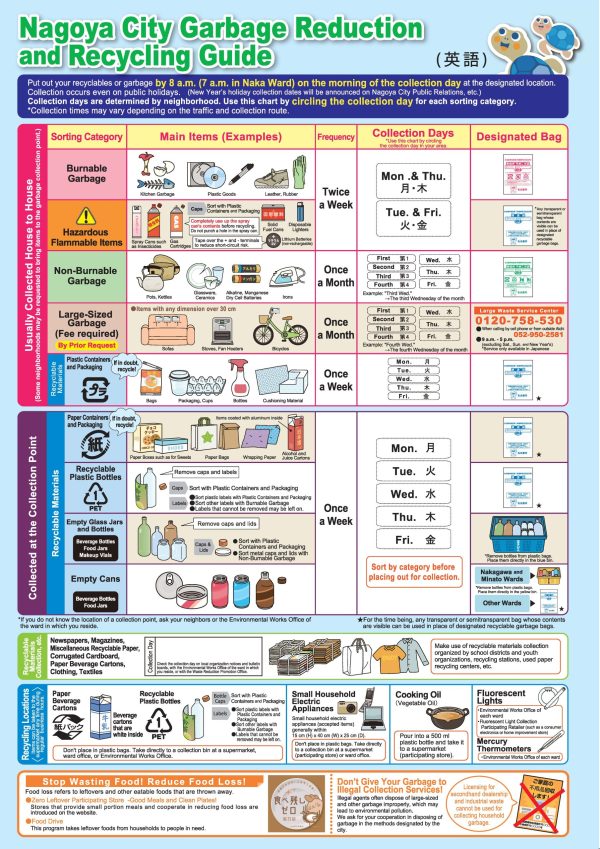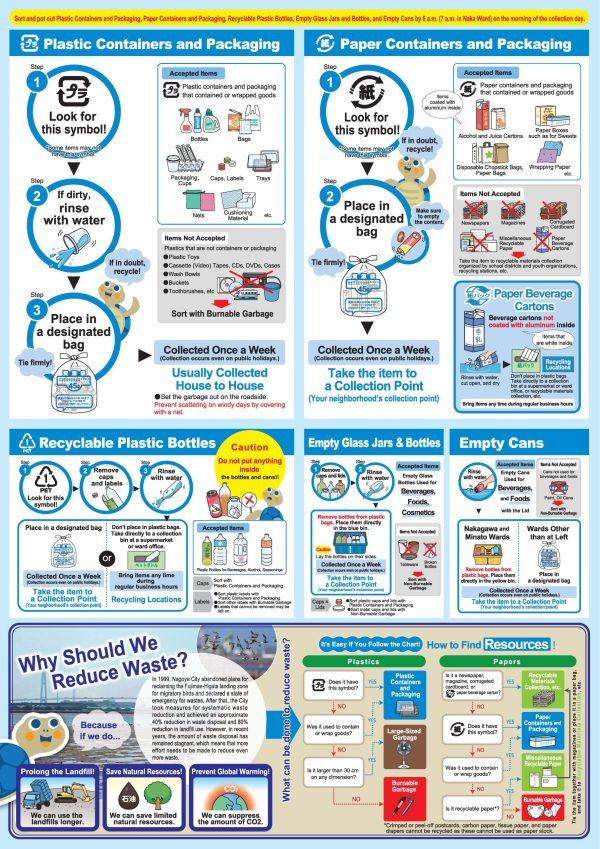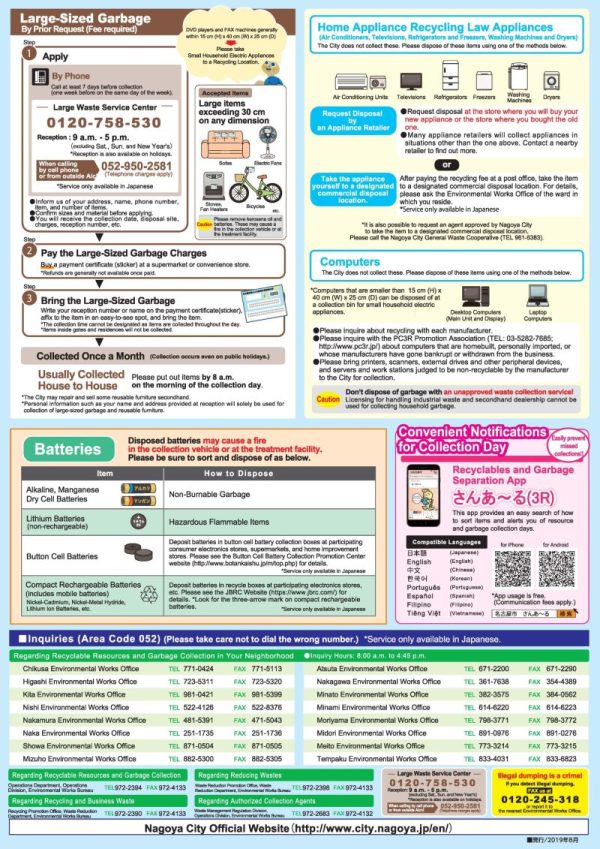Japan’s meticulous approach to waste management and recycling is a model of environmental responsibility characterized by the “3R Initiative” (Reduce, Reuse, Recycle). The country’s strict regulations ensure effective sorting and disposal of various types of waste.
General Waste Management Rules in Japan
- Burnable Garbage: Food scraps, garden waste, used tissues, diapers, old shoes, rubber gloves, and certain plastics. Disposal methods vary by location, with specific refuse bags often required.
- Recycling Practices: Plastic bottles (PET bottles) and containers, and cans are extensively recycled. Residents must use designated recycling bags, separate each type of recyclable, and rinse all items before disposal.
Detailed Waste Disposal Guidelines in Nagoya
Nagoya has specific guidelines for sorting and disposing of garbage:
- Burnable Garbage: Items like kitchen garbage, plastic goods, leather, and rubber should be disposed of twice a week in designated bags.
- Hazardous Flammable Items: Spray cans, solid fuel cans, disposable lighters, and non-rechargeable lithium batteries need special handling and are collected twice a week.
- Non-Burnable Garbage: Includes glassware, ceramics, pots, kettles, and dry cell batteries, collected once a month.
- Large-Sized Garbage: Items over 30 cm in any dimension require prior request and a fee for monthly collection.
- Plastic Containers and Packaging: Including cups, bottles, cushioning material, and paper containers are collected once a week.
- Recyclable Plastic Bottles (PET): Caps and labels should be removed and sorted accordingly, with collections occurring weekly.
- Empty Glass Jars and Bottles: Caps and lids must be removed and sorted separately, with bottles placed directly in designated bins.
- Empty Cans: In some wards, cans should be placed directly in specific bins without plastic bags.
Special Instructions:
- Recyclables and garbage must be put out by 8 a.m. (7 a.m. in Naka Ward) on collection days.
- Use transparent or semi-transparent bags for recyclables when designated bags are not available.
Additional Notes:
- Collection days vary by neighborhood and occur even on public holidays, except for the New Year’s holiday.
- Large Waste Service Center is available for queries in Japanese only.
Electronics and Appliances Disposal
- Home Appliances: Governed by specific recycling laws and collected through retail appliance stores.
- Computers and Peripherals: Must be recycled through the original manufacturer or a dedicated recycling center.
Conclusion
Japan’s rigorous waste management system, especially in Nagoya, demands vigilance and precision in sorting and disposing of garbage. This system is crucial in maintaining cleanliness and ecological balance, underscoring Japan’s commitment to environmental stewardship.







